Some of the links in this post may be affiliate links.
Einstein reportedly once said that the definition of insanity is doing the same thing over and over again but expecting different results. This is the cycle that I think many people fall into when watering their succulents!
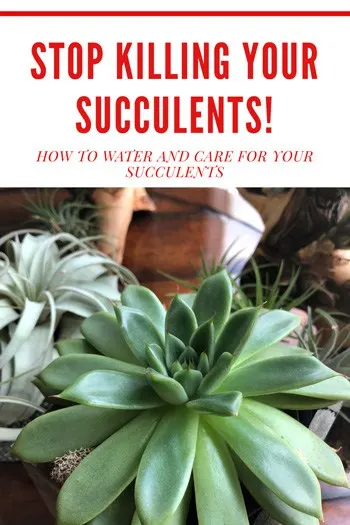
“Oh but they don’t need much water. I give a tiny bit of water once every two weeks. And they keep dying! I know that succulents aren’t supposed to need much water!” And the cycle repeats.
The succulent killer buys another succulent, follows the exact same routine, and kills yet another succulent! Guess what? If something is broken, you have to do something different to fix it!
Stop listening to falsities and read this post so you can once and for all learn how to water succulents! You CAN do it! I guarantee you, it is not difficult!

Table of Contents
How to Kill Your Succulents
Before I go into how to water and grow succulents, I’d like to explain the many ways that you can kill your succulents (or at least severely disfigure them!) Here is a roadmap for some of the ways:
Not providing your succulents with enough light. They will weaken and have extended growth. There is even a term for this phenomenon and it is called etiolation. I know this post is about water, but keep reading. It is all related. Underwatering succulents. Believe it or not, many succulent deaths are due to underwatering.
There IS a right way and a wrong way to water succulents, or any plant for that matter. Underwatered succulents will characteristically have dry and shriveled lower leaves.
Overwatering succulents. And by overwatering I mean keeping your potting mix wet for too long. Soft, mushy leaves and stems is a sign that you are overwatering your succulents.
Letting your succulents sit in water. This can fall in the “overwatering” category if you’d like. This occurs either because it is directly planted in a pot with no drainage holes (this is a BIG no-no!).
Or because the water drained out of the drainage hole into a tray or saucer, and the pot is sitting in stagnant water.
How to Water Your Succulents
The best way to water your succulents, regardless what variety you have, is to thoroughly water the potting medium until water completely drains out through the drainage hole. Drench it! Don’t be afraid!
The goal is to have a thoroughly moistened potting media, but be sure to let the excess drain away. If you water shallowly, you will leave dry pockets in your pot, and your roots will suffer. And if the roots suffer, the rest of the plant will suffer.
I use this method of watering very successfully for all my plants. For succulents, don’t even think about watering again until at least the surface of the soil, if not more, is dry. Then repeat the watering process.
And don’t necessarily go by a schedule! You should use a schedule more as a check point for your plants. If you have a weekly routine, and you check your succulents and see that the surface of the soil is still moist to the touch then don’t water! Wait a few more days and then check it again.

Now, that being said, you need to have a few things in line in order to have a healthy plant! After all, there are many factors that go into maintaining a healthy houseplant, and proper watering is just one factor.
It is a CRITICAL factor, but you must exercise your plant parenthood muscles in a few other areas too!
My Recommendations for a Thriving Succulent
There are several factors that affect how your succulent, or any plant for that matter, uses water.
The proper way to water is what I described above, but you need to also implement the following practices because they affect how the plant uses (or doesn’t use) water:
Your succulent needs to have enough LIGHT. Succulents in general need high light to look and be their best.
If you place them in a dark spot, they will not be able to use up enough water quickly enough, and if the potting media stays too wet for too long, you could risk rotting your plant out. Also, if your succulent is not getting enough light, the growth will be flimsy and weak.
Your succulent needs to have the PROPER SIZED POT. This goes for any plant! I’ve seen people place small plants into gigantic pots and then wonder why the plant is not doing well.
If your pot is disproportionately large compared to the size of your plant’s root system, the potting media or soil will stay wet for far too long. Thus, encouraging your succulent to rot.
When you repot a pot bound plant, you should only go one or two sizes bigger.
For example, if you have a 4 inch pot, then repot your pot-bound plant into a 5 or 6 inch pot. No bigger! Check out my blog post on how to repot plants.
Conversely, if you have very small pots, they will dry out much more quickly. You will need to water small pots, especially if you have terra cotta pots, much more frequently than larger ones.
You should get the notion out of your head that you shouldn’t water too frequently. If the soil is dry, then water! Regardless of how often it happens. Small pots will dry out almost TOO quickly sometimes.
Gauge when to water by how dry the soil is, not by your calendar.
The TYPE OF POT also makes a different. Terra cotta pots dry out substantially quicker than a plastic pot or glazed ceramic pot. Especially for small terra cotta pots, you may run the risk of actually underwatering your succulent!
You have read that correctly. Underwatering succulents is an error that I see many people make.
You need to find a happy medium in terms of potting soil moisture somewhere in between underwatering and overwatering. Succulents still need water!
If you have planted your succulent directly into a pot with no DRAINAGE HOLES, please remove your plant into a pot that does have drainage holes.
There is nowhere for water to escape if there are no drainage holes, and this is a quick invitation to a mushy, rotten death.
A WELL DRAINED POTTING MIX is a must! Keep reading to my recommendations below where I describe this in more detail.
Potting Soil Recommendations
I wanted to elaborate a little on potting soil because it’s such an important topic. I have become increasingly more picky with potting mixes for my plants, so I will start with a prepackaged mix, and amend it slightly. The effort is well worth it.
There are a couple potting mixes that I love using. One of them is Miracle Gro Cactus, Palm and Citrus potting mix. Another that I like a lot is the Hoffman Organic Cactus & Succulent Soil Mix.
You can definitely use the potting mixes as is, however I started to amend these mixes with either perlite or pumice. Either one will work. I don’t have a strict recipe, but I’ll roughly use maybe one part of perlite or pumice to 3 parts of potting mix.
Adding perlite and pumice will increase your soil’s porosity, help slow down compaction, and result in a more sharply drained potting mix. And succulents love this!
You can increase the proportion of perlite or pumice, however your soil may become TOO well drained and potentially dry out TOO quickly!
You’ll want a balance between the moisture retention of your potting mix, so that you’re not constantly watering, and the ability to drain well, so that things will dry out quickly and your succulent doesn’t rot.
Start with my recommendation and see how you like it!
Remember, taking a holistic approach to plant care is the way to go. You can’t just have one correct factor and ignore the rest. Proper watering of succulents is paramount!
But in order to have a healthy succulent, you also need appropriate light, pot type, pot size, and well draining potting mix so that your succulent can effectively use the water that you give it!

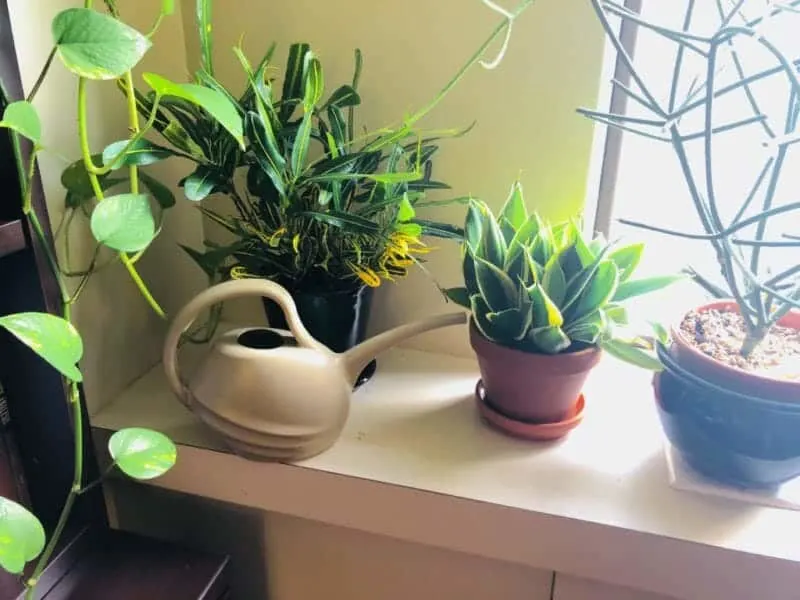
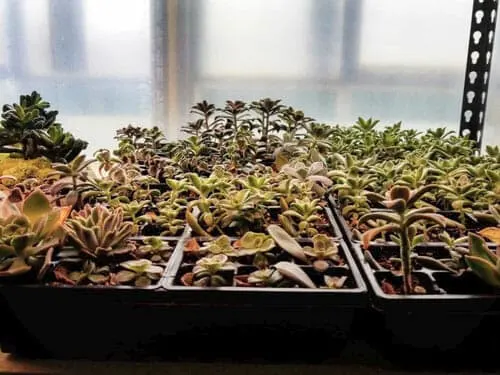
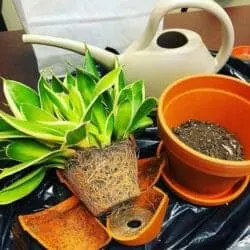
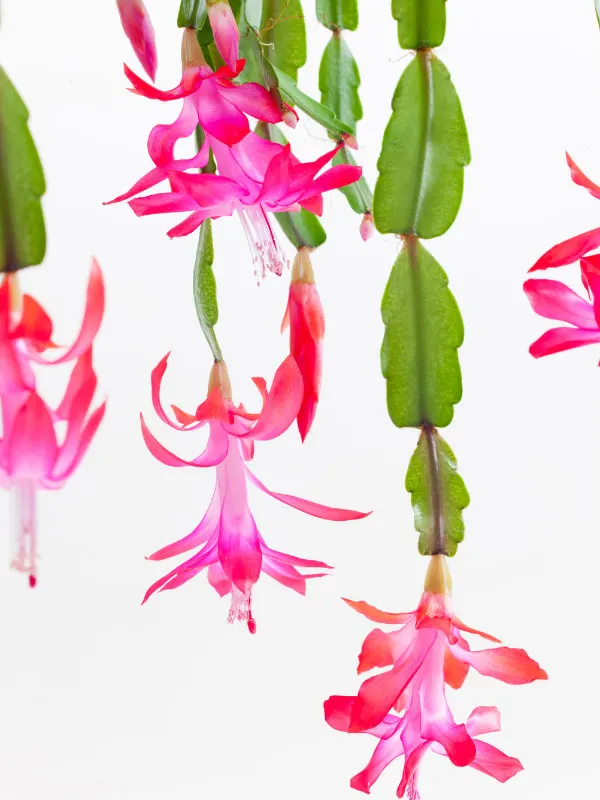
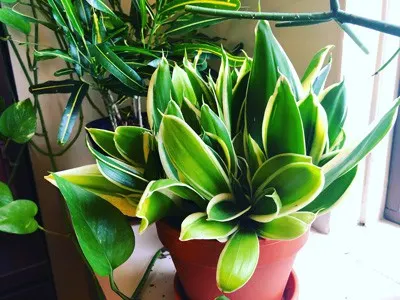
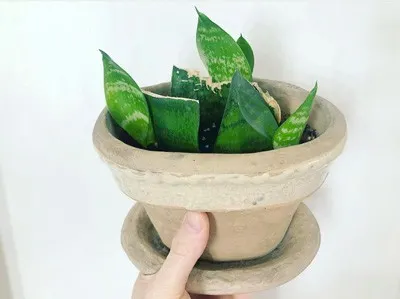
Tess Shumaker
Saturday 31st of December 2022
Excellent instruction! You answered all of my questions and provided more information I was not even thinking of. I will be following your storefront and Pinterest. Sharing as well!!
Raffaele
Sunday 1st of January 2023
So glad you enjoyed the post Tess! :-). If you haven't subscribed to my newsletter, you may enjoy it :-) Have a healthy and happy New Year.
Maryann Davis
Friday 25th of March 2022
I thoroughly watered my Little Warty plant before leaving for a few days, because I thought the soil had felt very dry. but when I returned home, my plant had collapsed in a gooey mess onto the floor. There was nothing left of it to try to save. I don’t know what I did wrong. I did keep it about two feet from a south window with a Venetian blind deflecting direct sun, because the plant label said Little Warty needed some shade.
Raffaele
Friday 25th of March 2022
Sorry to hear that Maryann :-(. I'd need more details to help. Did it perhaps sit in water at all in a saucer or pot? Was there a drainage hole?
NancyB
Saturday 8th of January 2022
I was given a small pot with a couple of cacti in it… the woman said she almost never watered it… I watered it and it actually seemed to like it, but then I watered it along with the same fertilizer I use for my other plants, a fish emulsion type fertilizer and the cacti just dried up.. do they not like fertilizers?
Raffaele
Monday 10th of January 2022
Hi Nancy! Cacti don't need fertilizer often at all....Honestly, once or twice during the growing season would be enough. I'd find it hard to believe though that it dried just as a result of the fish emulsion fertilizer. How do you determine when to water, and can you tell me exactly how you water? It sounds like a watering issue to me.
Lani
Wednesday 9th of January 2019
Help!! I transplanted my jade. I thought it was doing well and then some of the branches started shriveling?!?
rcdilallo@gmail.com
Wednesday 9th of January 2019
I would need more detail than this to help you. It could have resulted from a variety of things.
Sudha
Tuesday 11th of December 2018
Well explained, one question - can I use cocopeat in the soil meant for succulents.
rcdilallo@gmail.com
Tuesday 11th of December 2018
I would be careful using too much of that since it holds a lot of water and that can be a downside for succulents. It all depends on many other variables though.